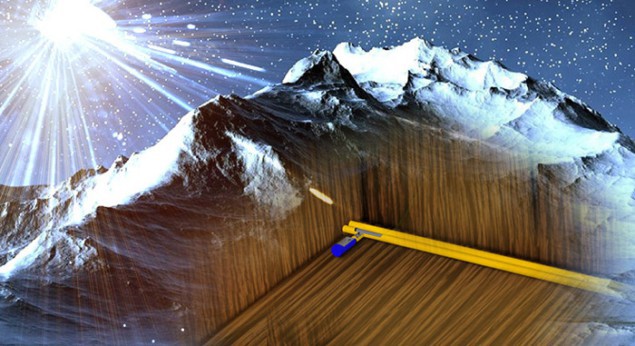
An international group of researchers has issued a “letter of intent” for a new neutrino experiment to be built at the China Jinping Underground Laboratory (CJPL). The scientists believe that the proposed Jinping Neutrino Experiment would measure solar and geoneutrinos better than any other facility in the world, thanks to its extremely low level of background radiation.
CJPL is located under a mountain – with about 2400 m of rock cover – in China’s south-western Sichuan province. Completed in 2010, it is currently the deepest underground lab in the world, and hosts two dark-matter experiments: CDEX and PandaX. Work began in 2014 to expand CJPL so that it has room for four more experimental chambers – each 12 m wide and 130 m long. The expansion is expected to be complete by the end of this year.
Deep detector
The new letter of intent has been authored by scientists at Tsinghua University, along with others elsewhere in China, Germany and the US, and outlines the science that the Jinping Neutrino Experiment would carry out. Costing around 300m yuan (£32m) to design and build, it will feature 4000 tonnes of liquid scintillator or water-based liquid scintillator, and will aim to obtain precise measurements of the electron neutrino fluxes generated by the Sun. Although previous observations have shown that neutrinos oscillate from one flavour to another, John Beacom, a theorist at Ohio State University and a member of the proposal, says that current measurements could be more refined to offer “tremendously exciting” results.
The experiment would also study electron antineutrinos generated in the Earth’s mantle and crust, which could be used to measure the amount and distribution of uranium and thorium inside of the Earth. Compared with other geoneutrino detectors, CJPL is located far away from nuclear power plants, which could affect the measurements. Shaomin Chen, a physicist at Tsinghua, says that the researchers will now place a small detector at CJPL to carry out a preliminary study. If all goes well, Chen says they could design and build the detector within the next five years.
A preprint of the letter is available on the arXiv server.



